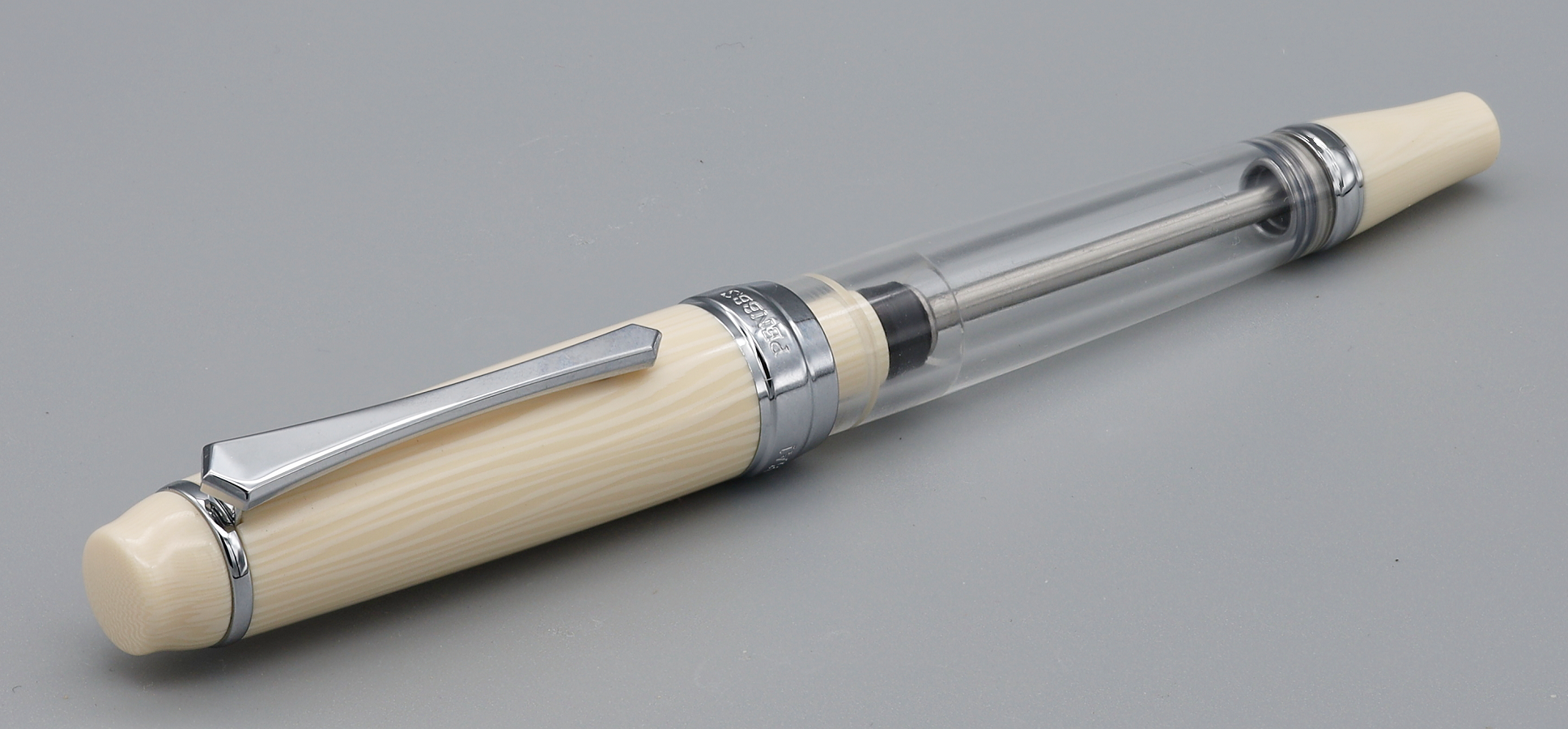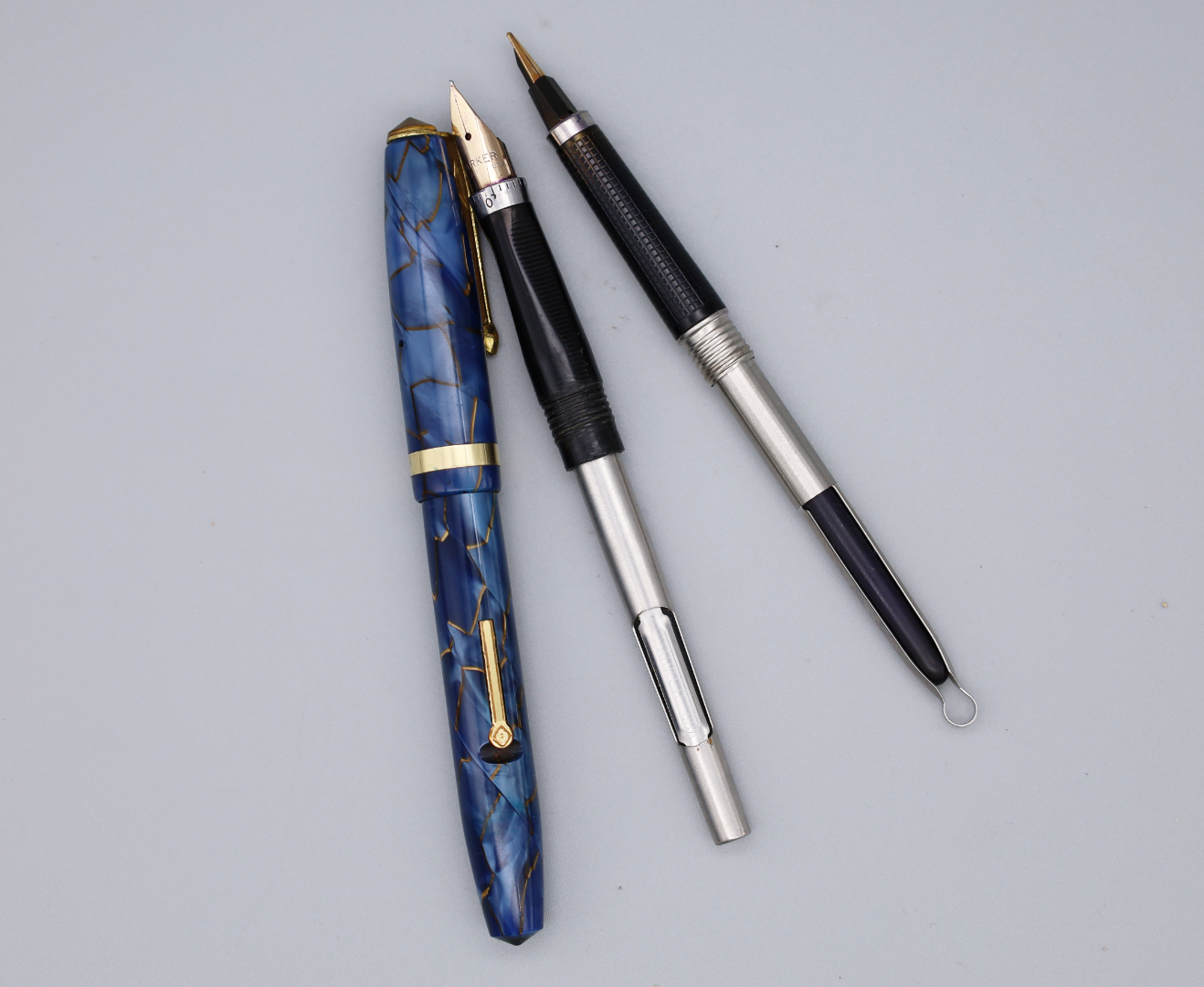Fountain pens use a variety of ink filling systems.
Prior to the revolution caused by the introduction of ink cartridges, most pens used rubber ink sacs filled by pressing then releasing them to suck in ink. This could be done directly such as with the Parker aerometric system or via an external lever.
While cartridges are convenient, they are also expensive and inflexible in terms of ink shades available. This led to the development of cartridge convertors, small piston filling devices which allow bottled ink to be used in pens designed for cartridges. However, as these have to be compatible with the slim size of cartridges, these convertors themselves have the problem that their ink volume is restricted. Just to confuse matters, there are many different types of incompatible cartridge systems in use, see here.
This has led to the emergence of larger size pens with permanently connected piston fillers, which use much of the barrel volume for ink. There are two piston systems currently in use. The piston can directly draw in ink, like the cartridge convertors. But a second system, called vacuum filling works by pushing the piston down to create a vacuum behind it and when this is released, ink is sucked in.
Finally, a third method of using much of the barrel volume is the ‘non-system’ known as ‘eye-dropper’, where the ink tank in the body is directly filled by a pipette similar to those used to dispense eye-drops.
There were many more filling systems which were used in the 20th century and a good description is here.




